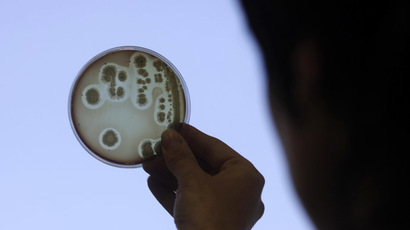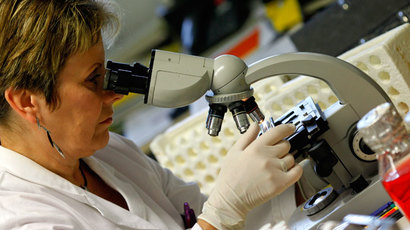Scientists recreate extinct Spanish flu virus that killed over 50 million

The extinct influenza virus that caused over 50 million deaths a century ago has been replicated from avian flu present in wild ducks. Scientists are seeking to study how such a virus could lead to a new pandemic.
Professor Yoshihiro Kawaoka of the University of Wisconsin-Madison, along with an international team of scientists, created a life-threatening virus that is only three percent different from the 1918 Spanish flu that devastated the globe in possibly the worst pandemic in history.
The team infected laboratory ferrets with a close copy of the 1918 virus to analyze the ease with which it could be transmitted to the best animal model of the human disease.
“The point of the study was to assess the risk of avian viruses currently circulating in nature. We found genes in avian influenza viruses quite closely related to the 1918 virus and, to evaluate the pandemic potential should such a 1918-like virus emerge, identified changes that enabled it to transmit in ferrets,” Kawaoka said, according to The Independent.
The 1918 virus was recreated from eight genes found in avian flu viruses, which are found in populations of wild ducks. Researchers rebuilt the virus with “reverse genetics” so that it was 97 percent identical to the 1918 flu strain, according to the study published in the journal Cell Host and Microbe.
The research was conducted in a secure laboratory reinforced with the second-highest biosafety level.
Critics charge that any benefits of recreating the virus from existing avian flu strains are not worth the potentially awful risks if the genetically-engineered virus were to leak, on purpose or not, from the laboratory.
Kawaoka countered the argument, saying that the research is needed to produce influenza vaccines and other measures designed to combat the risks of a future flu pandemic.
“These critics fail to appreciate the precautions and safeguards built into our work, the regulation, review and oversight these studies receive...The risks of conducting this research are not ignored, but they can be effectively managed and mitigated,” Kawaoka said.
He said such studies advance medical knowledge and preparedness needed for the future.
“We know studies like ours advance the field and help those responsible for making decisions about surveillance and pandemic preparedness [to] base decisions on scientific fact, rather than conjecture. Therefore our research provides important benefits that cannot be achieved by other means,” he said.














